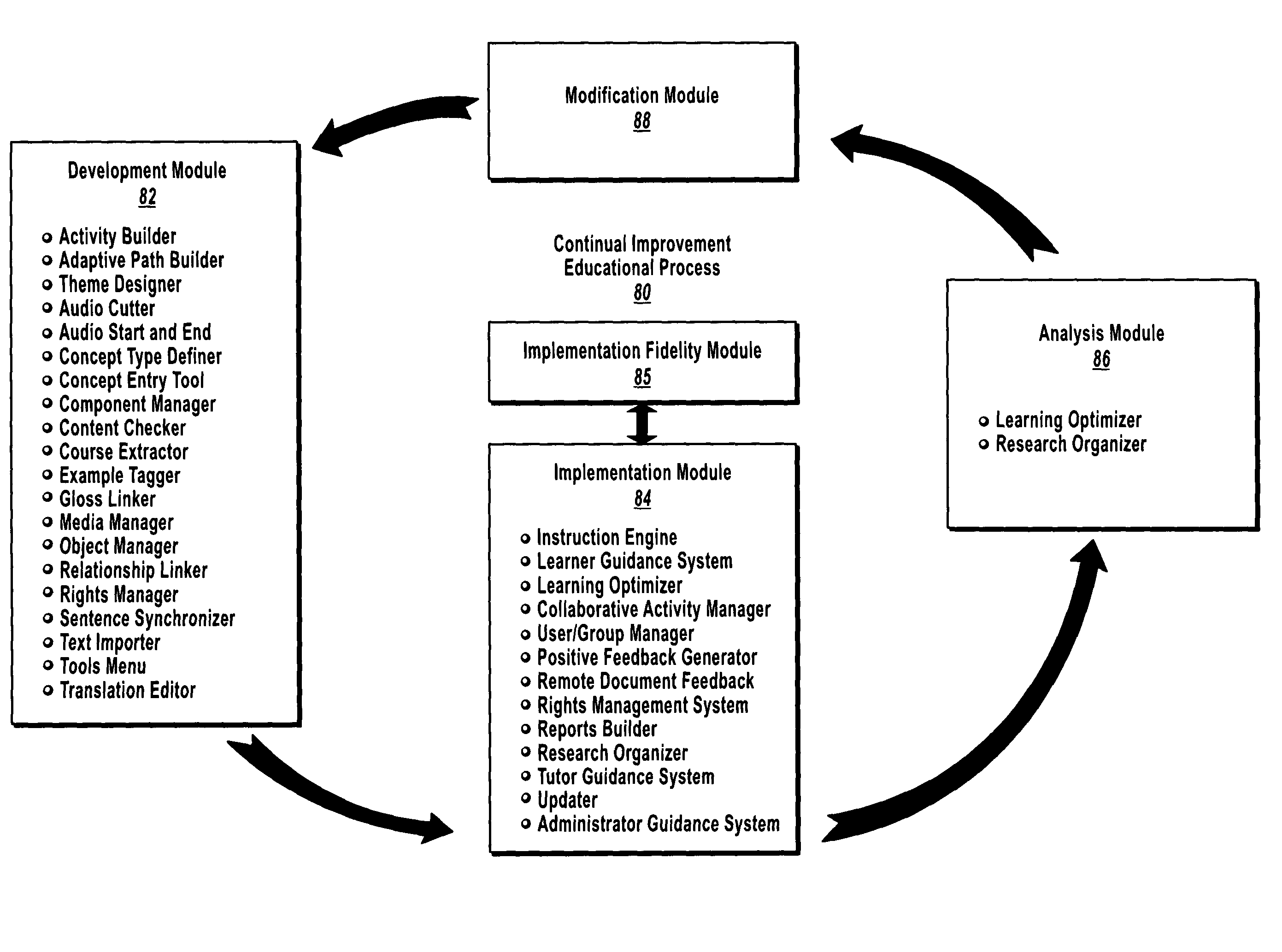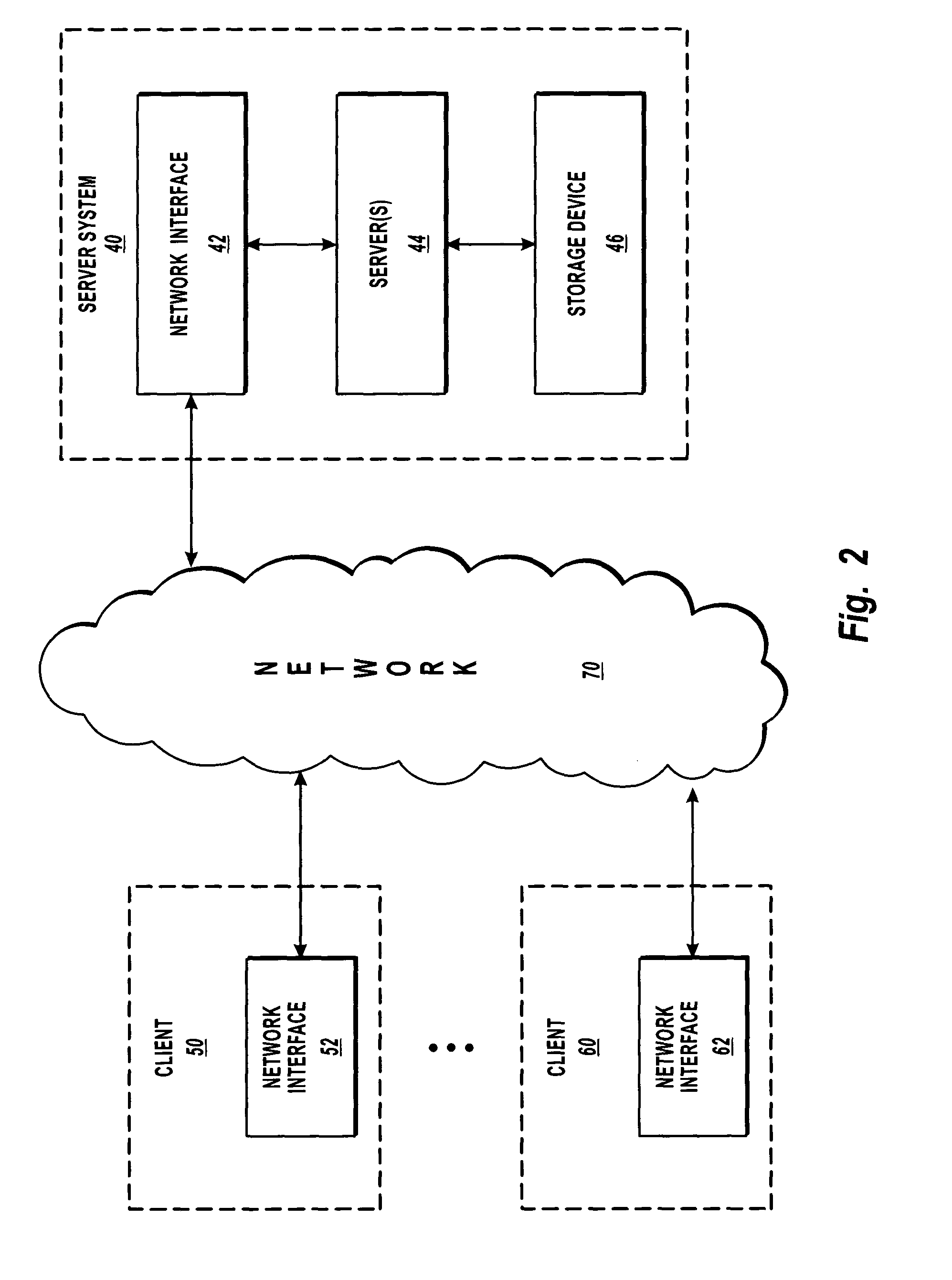Systems and methods for providing a dynamic continual improvement educational environment
a dynamic and continuous improvement technology, applied in the field of dynamic continuous improvement educational environment, can solve the problems of limited amount of individualized training that can occur with students, inability to increase the amount of individualized training, and techniques that employ computer technology, and achieve the effect of rapid design modification
- Summary
- Abstract
- Description
- Claims
- Application Information
AI Technical Summary
Benefits of technology
Problems solved by technology
Method used
Image
Examples
Embodiment Construction
[0059] The present invention relates to providing a dynamic continual improvement educational environment. In particular, the present invention relates to dynamic systems and methods for gathering / tracking data, automatically adapting to information about an individual (e.g., the individual's pace of learning, background, style of learning, progress in learning, etc.) selectively determining the type and difficulty of content provided to an individual, selectively providing an exposure frequency for the content, and / or enabling rapid design modifications within the educational environment.
[0060] In the disclosure and in the claims the term “design” or “designing” shall refer to any phase in creating, developing, organizing or crafting educational content for presentation to one or more users, including crafting how the educational content shall function, generating the instructional system or educational content for presentation, or the like.
[0061] Embodiments of the present inven...
PUM
 Login to View More
Login to View More Abstract
Description
Claims
Application Information
 Login to View More
Login to View More - R&D
- Intellectual Property
- Life Sciences
- Materials
- Tech Scout
- Unparalleled Data Quality
- Higher Quality Content
- 60% Fewer Hallucinations
Browse by: Latest US Patents, China's latest patents, Technical Efficacy Thesaurus, Application Domain, Technology Topic, Popular Technical Reports.
© 2025 PatSnap. All rights reserved.Legal|Privacy policy|Modern Slavery Act Transparency Statement|Sitemap|About US| Contact US: help@patsnap.com



